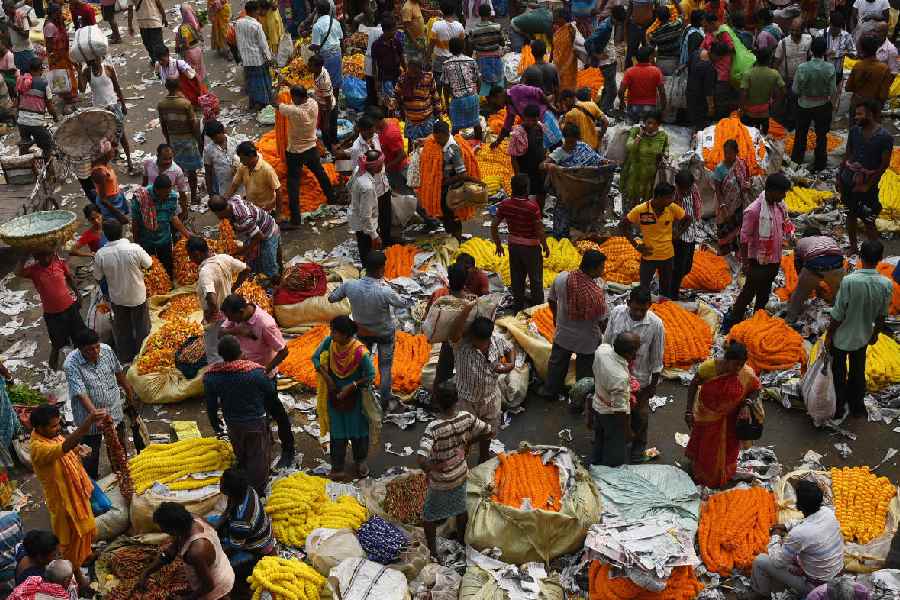The flood in several pockets of Bengal earlier this month has severely hit the floriculture market with farmers struggling to match the demand for flowers, particularly that of lotuses, ahead of Durga Puja.
Bengal requires nearly 1 crore lotuses on the Puja days, traders said. During Sandhi Puja, the transition from Ashtami to Navami, the goddess is offered 108 lotuses.
With large swathes of land under water, flower-yielding plants of different varieties, including tuberose and marigold, have wilted away in pockets of East Midnapore, East Burdwan, Birbhum and Howrah, which are among the major flower-producing regions.
Parts of at least seven districts in south Bengal — East and West Burdwan, Birbhum, East Midnapore, Bankura, Hooghly and Howrah — were flooded in the first week of October following heavy rain, which forced DVC to release close to 1 lakh cusec of water from the Maithan and Panchet dams.
Chief minister Mamata Banerjee had to instruct district officials to shift people from low-lying areas to relief camps as water gushed in.
“The cultivation of lotuses was hit initially because of inadequate rain. The subsequent excess rainfall left acres of lotus fields inundated and the flowers were damaged,” said Ashim Maity, a farmer from Panskura in East Midnapore.
“Collection of lotus buds begins nearly a fortnight before the Puja. They are kept in cold storage and brought out before the festival. This time, there is hardly any stock in the storage.”
Around 4,000 farmers in south Bengal are engaged in cultivating lotuses, whose Bengal variety is famous for its size and longevity.
Farmers say that unlike the variants from Karnataka and Odisha, the Bengal lotus lasts at least two or three days. The pink hue for which the Bengal variety is famous is missing from the lotus from other states.
“This year the shortfall is close to 40 per cent of the target. Since Bengal lacks dedicated cold storage for flowers, the scant produce is stored in multi-purpose cold stores, where they share space with vegetables and other items. This has resulted in even further damage to the flowers,” said Narayan Nayek, general secretary of the Sara Bangla Phool Chashi O Phool Byabsayee Samiti.
“We might have to meet the demand with supplies from Odisha and Karnataka this time.”
Traders dealing with flower farmers in East and West Midnapore and other districts, which supply the bulk of the flowers sold at Mullickghat in Howrah, the biggest flower market in Bengal, said the prices are going north by the day.
“Tuberoses that would earlier sell for Rs 100 a kg are now selling for Rs 250 at the wholesale market. Till last year, lotuses would sell for Rs 10-15 apiece. The current rate is Rs 20-25,” said Shyamal Das, a wholesale dealer at Mullickghat.
“Marigold would sell for Rs 30-40 a kg. Now, it is priced at Rs 90-100 a kg.”
Flower retailers in Calcutta mostly source their supplies from the Mullickghat market. The volume of business around this time shoots up because of the Puja.
“Our flower supplier has said lotuses might cost Rs 35-40 apiece on the Puja days. We have requested him to lower the price a bit,” said Ajay Ghosh, a puja organiser from Ultadanga.
